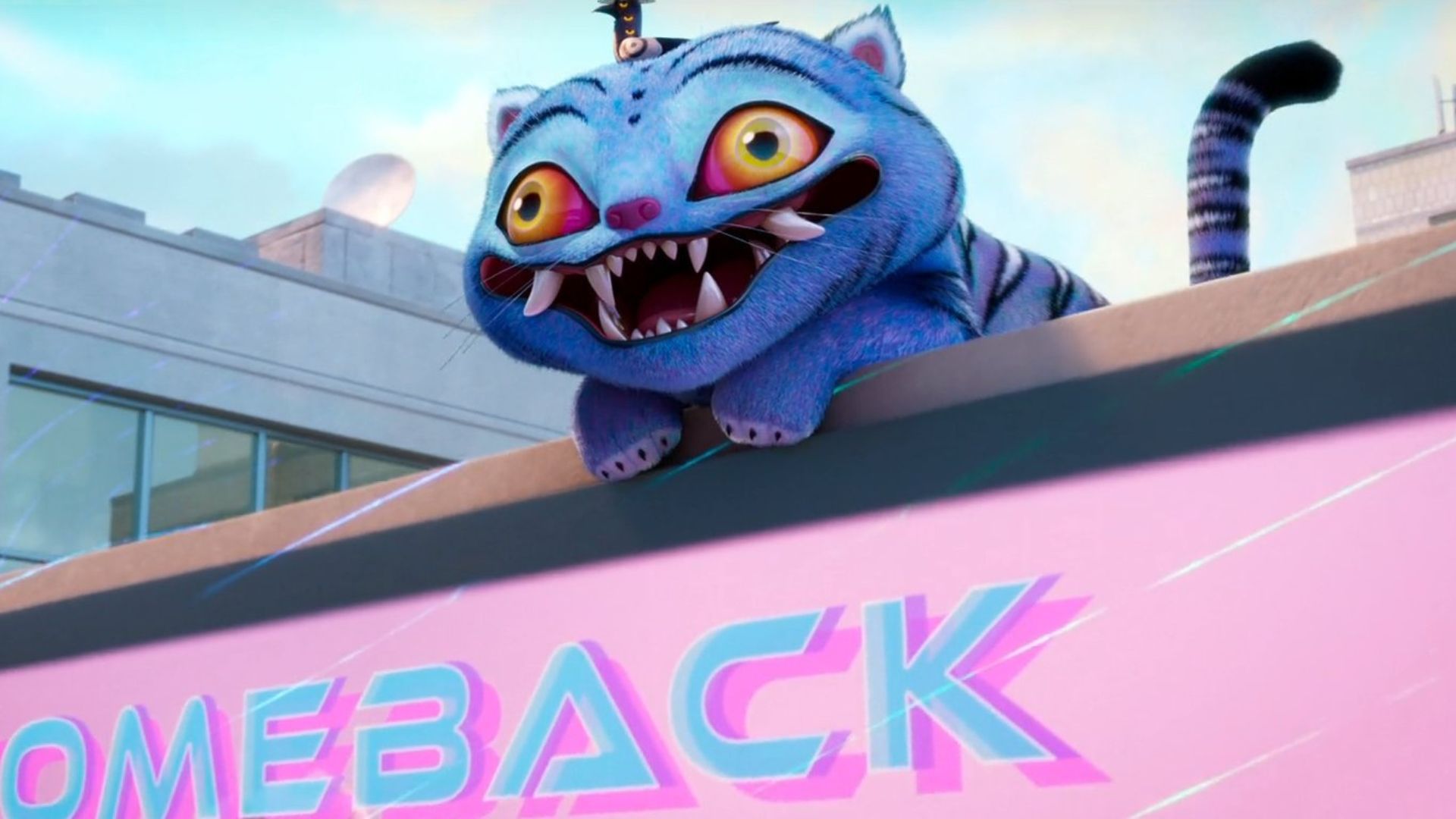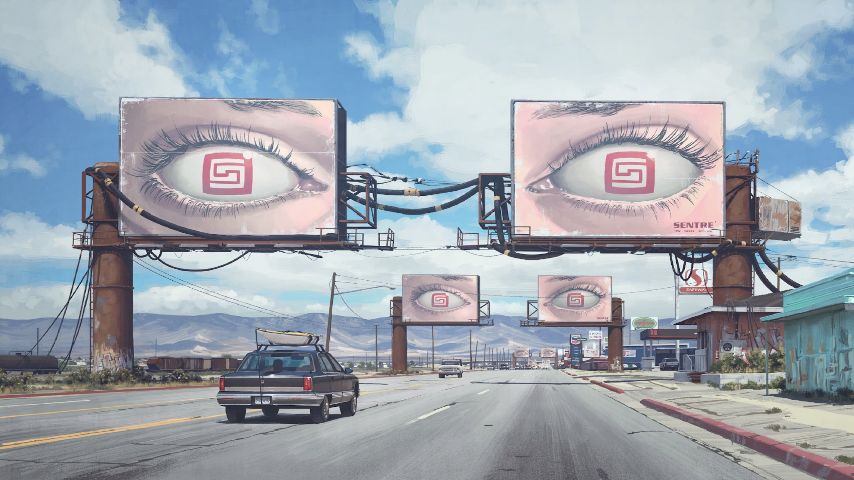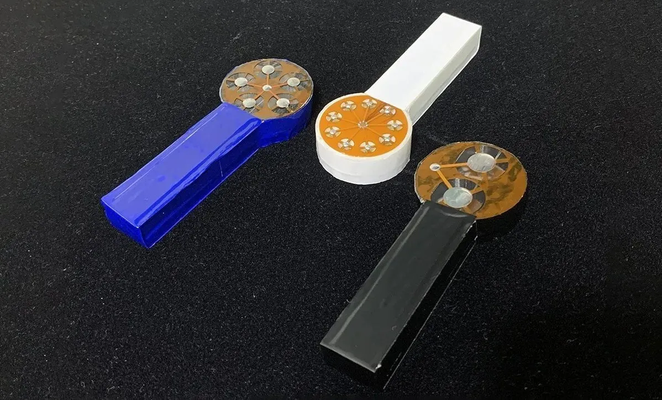Imagine blending K-pop culture, action, romance, fantasy, musical elements, and history into one animated film. Sounds like a recipe for disaster, right? But "K-Pop Demon Hunters" pulls it off! Produced by Sony Animation and exclusively on Netflix, this animated movie not only manages to do it but also surprises with a plot that's even more unexpected than the trailer suggests (in a good way).
The story revolves around the global K-Pop girl group HUNTRIX: dazzling idols on stage, demon hunters off stage. They face off against the irresistibly charming demon boy band, Saja Boys, with romantic K-drama moments and mysterious backstories woven in. Upon release, it quickly topped Netflix charts in 26 countries and scored a 94% critic approval on Rotten Tomatoes, sparking a wave of fan-made creations.
While the plot might seem cliché with its double lives, exorcism themes, and good vs. evil dynamics, these classic structures allow everyone to find emotional resonance wrapped in K-pop culture packaging. As a Once (TWICE fan), even though HUNTRIX doesn't acknowledge our beloved TWICE, I still found five intriguing elements worth sharing. Let's see if you know them!
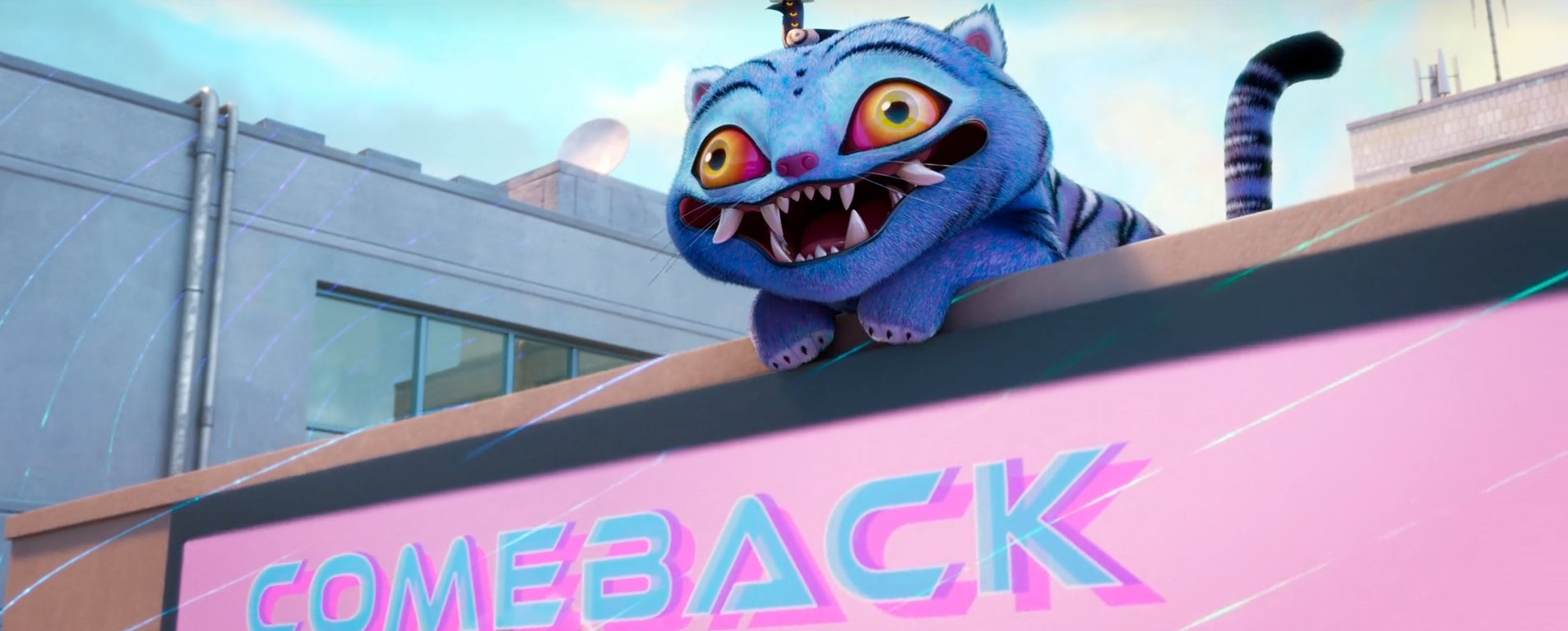
(Source: Netflix)
Perfect Casting: TWICE Sings the Ending Song, Paired with Veteran Producers
First up, we have to talk about the ending song "Takedown." Choosing TWICE was spot on.
While many know TWICE for "TT," it was "Cheer Up" that truly skyrocketed them to fame. This song not only topped the Gaon charts but also established TWICE's signature "sunny and energetic" image, perfectly aligning with HUNTRIX's mission in "K-Pop Demon Hunters": to drive away darkness with music.
With Jihyo, Jeongyeon, and Chaeyoung leading the charge, the roles fit perfectly: Jihyo, the leader and main vocalist, mirrors Lumi; Jeongyeon's cool image and tall stature match Mira; and Chaeyoung's sweet yet fierce rapper persona aligns with Zoe.

(Source: Netflix)
"Takedown" is produced by TWICE's longtime collaborator Lindgren, who worked on their transitional hits like "I Can’t Stop Me," "Cry For Me," and "SCIENTIST." He teamed up with Grammy-nominated Ian Eisendrath, known for his work on "Wicked" and "Snow White." Director Maggie Kang confidently stated, "Our goal is for the music to be recognized as K-Pop music as soon as it’s released."
Fighting Demons On-Screen, Topping Charts Off-Screen: Aespa's "Armageddon" Producer Voices HUNTRIX's "Golden"
While TWICE sings the ending song "Takedown," the in-movie HUNTRIX songs are performed by three powerhouse musicians: Korean producer EJAE (Lumi), Korean-American singer Audrey Nuna (Mira), and REI AMI (Zoe).
"Golden" captures HUNTRIX's inner world: Lumi learns to be honest, Mira breaks free from her prestigious family, and Zoe confronts her people-pleasing nature. The sincerity and relatability of "Golden" not only won fans over in the movie but also resonated in the real world. After the movie's release, it quickly climbed Spotify and iTunes global charts, becoming the most popular track from "K-Pop Demon Hunters."
In the movie, the "Golden" performance is canceled due to Lumi's throat issues, causing the soul gate's rift to widen, highlighting the importance of Lumi's voice. This incredible voice is provided by EJAE, known for creating hits like Red Velvet's "Psycho," aespa's "Armageddon," and "Drama." Check out her "Armageddon" demo to feel her vocal power beyond the animation.
So Refreshing! Who Sings Saja Boys' "Soda Pop"? Are They a Virtual Boy Band?
Now that we’re done talking about HUNTRIX, it's time for my favorite: Saja Boys. Fans speculate that Saja Boys' leader Jinwoo's look is inspired by Cha Eun-woo and Nam Joo-hyuk. With a handsome face, broad shoulders, and short black hair, voiced by Ahn Hyo-seop in both English and Korean, who wouldn't swoon over this virtual idol? Fans are already signing up for the "Lion" fandom!
Besides their good looks, Saja Boys' debut song "Soda Pop" is refreshingly perfect for a summer boy band hit, with pastel makeup and shoulder dance moves. The song features professional musicians, including Andrew Choi (Jinwoo), Neckwav (Abby), Danny Chung (Baby), and samUIL Lee (Romance), with a surprise appearance by former U-KISS member Kevin Woo (Mystery).
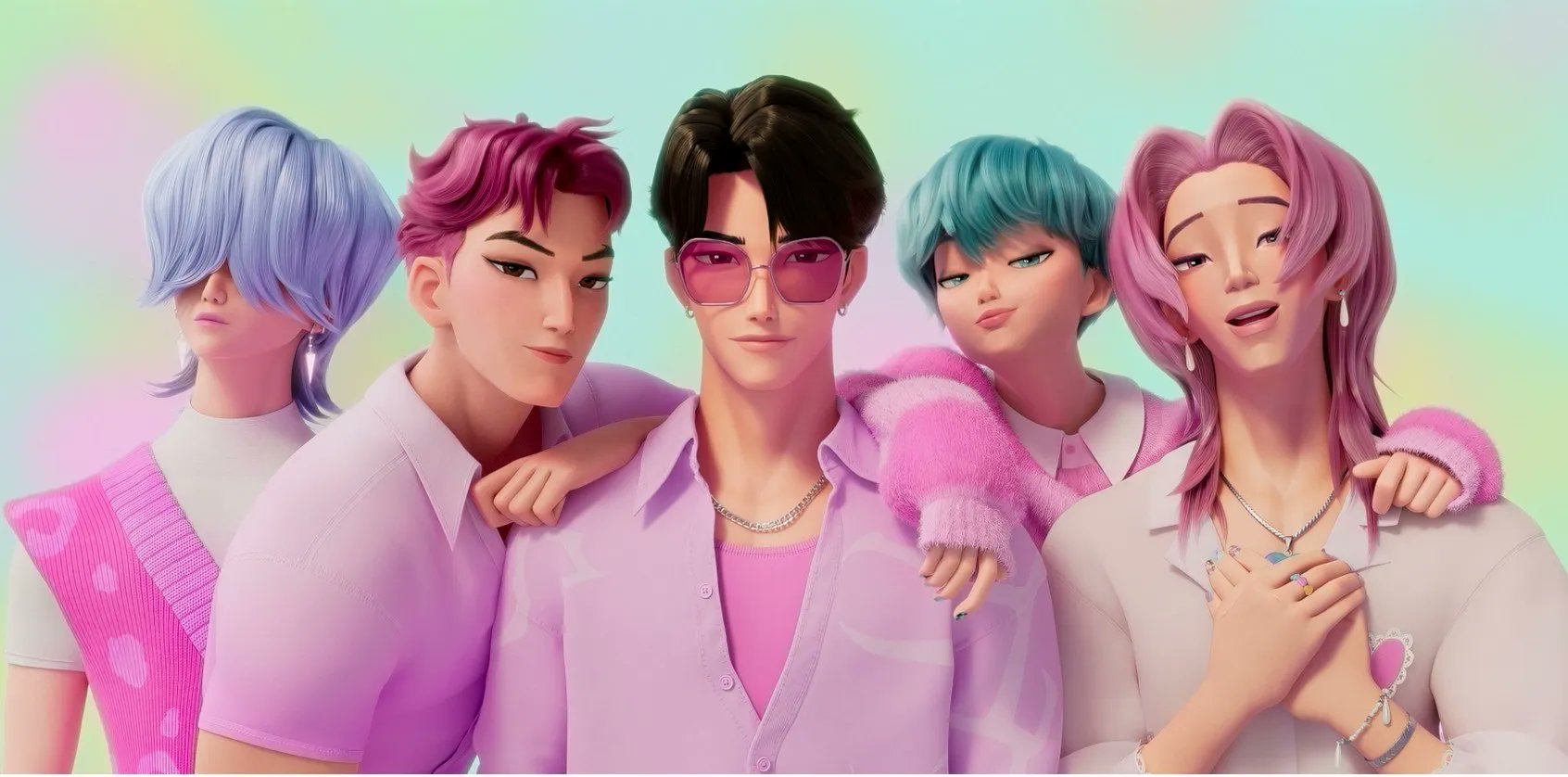
Meet the members: From left to right: Mystery, Abby, Jinwoo, Baby, and Romance. (Source: X)
Rumor has it that Saja Boys' member images are inspired by famous boy bands like BIGBANG, BTS, ATEEZ, Stray Kids, MONSTA X, and TXT. However, the director clarified that they didn't reference specific groups or members but were influenced by all K-pop groups and members. If they truly embody the essence of these top boy bands, can we please have the virtual idols Saja Boys debut for real?
Saja Boys' Name Has Hidden Depths: "YOUR IDOL" Isn't a Sweet Song, It's a Soul-Stealer
Earlier, I mentioned fans signing up for the "Lion" fandom, a play on words with Saja Boys' team symbol. It's interesting to note that due to the limited syllables in Korean, homophones are common. This linguistic feature, while seemingly limiting, allows for wordplay with multiple meanings.
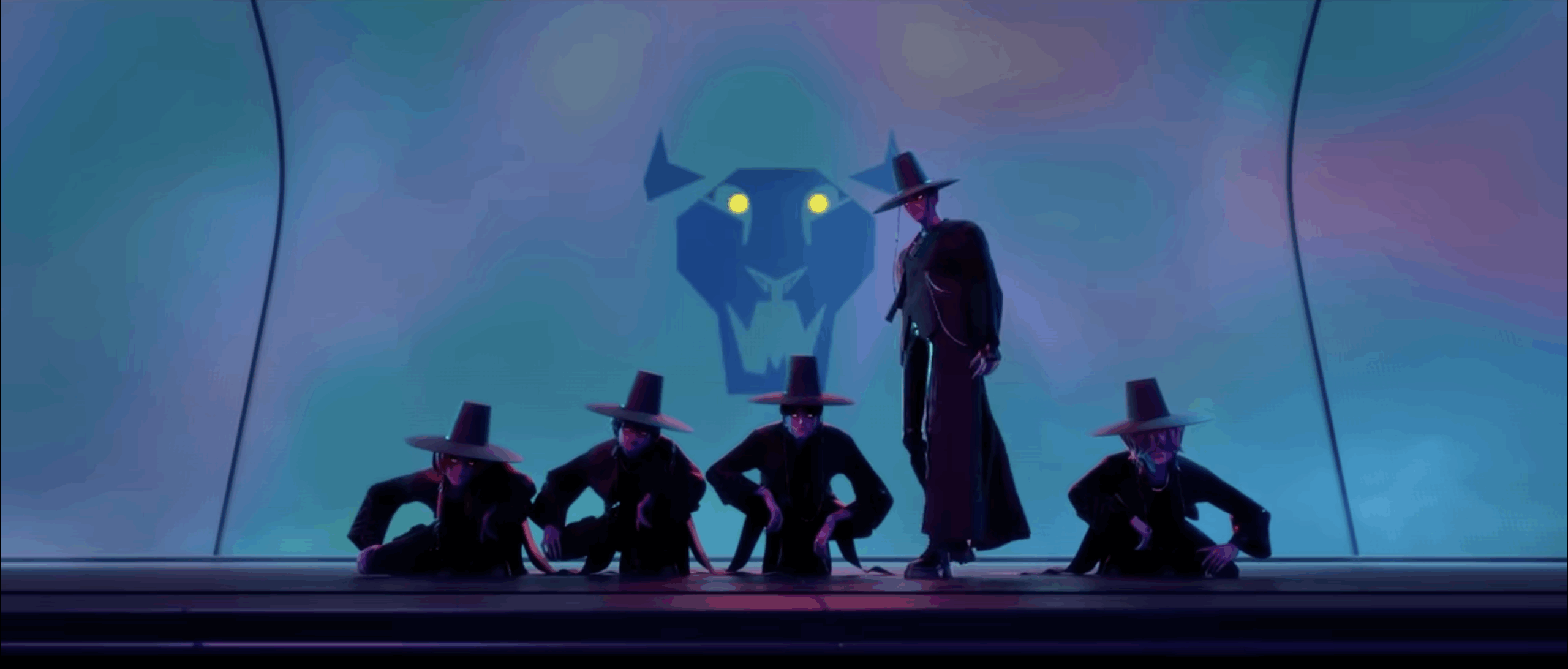
(Source: Netflix)
For instance, the name "Saja" in Saja Boys, written as "사자" in Korean, carries three meanings:
- The Lion: The group's symbolic animal
- The Dead: Their ability to extract human souls
- The Messenger: Their mysterious identity from the soul gate
This setup is reminiscent of the Korean "grim reaper" culture, where mysterious agents escort souls. Remember Lee Dong-wook in "Goblin"? He always wore a black suit and coat, the modern attire of a grim reaper. Saja Boys' black robes and hats during the soul gate and "Your Idol" performance echo the traditional grim reaper image, also hinting at Jinwoo's backstory.
Next Big Hit? Traditional Korean Style with Goblins, Magpie Sussie, and Little Tiger Derpy
"K-Pop Demon Hunters" is rich with traditional Korean elements, making it a standout feature. HUNTRIX's light sticks are inspired by traditional knotted ropes, and Lumi and Zoe's weapons draw from the Four Tiger Sword and Shaman's Knife. Among these traditional elements, the scene-stealing little tiger Derpy and multi-eyed magpie Sussie have garnered the most attention.
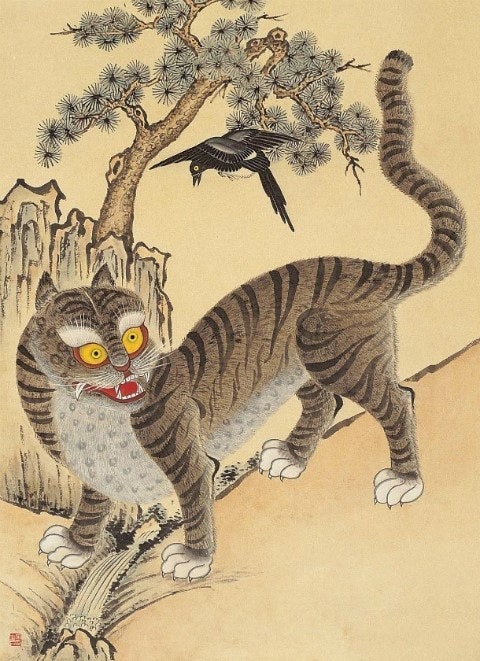
Rumor has it that Derpy the tiger and Sussie the magpie sparked debates among Chinese and Korean netizens again? But the "stealing Chinese culture" claim is baseless! (Source: Naver)
Jinwoo's tiger Derpy and magpie Sussie are actually classic combinations from Korean folk paintings known as "Magpie and Tiger." In these Joseon-era folk paintings, tigers appear in a cute manner, symbolizing warding off evil and disasters, while also satirizing court officials; magpies are messengers of good news, representing commoners. These paintings not only protect homes but also convey a strong anti-establishment humor, a unique flavor of Korean folk art.
In the movie, they serve as message carriers, a design choice with romantic significance. The director explained that since Jinwoo is from the Joseon era, using modern communication methods seemed "inappropriate," so they chose this classically elegant way of sending messages.
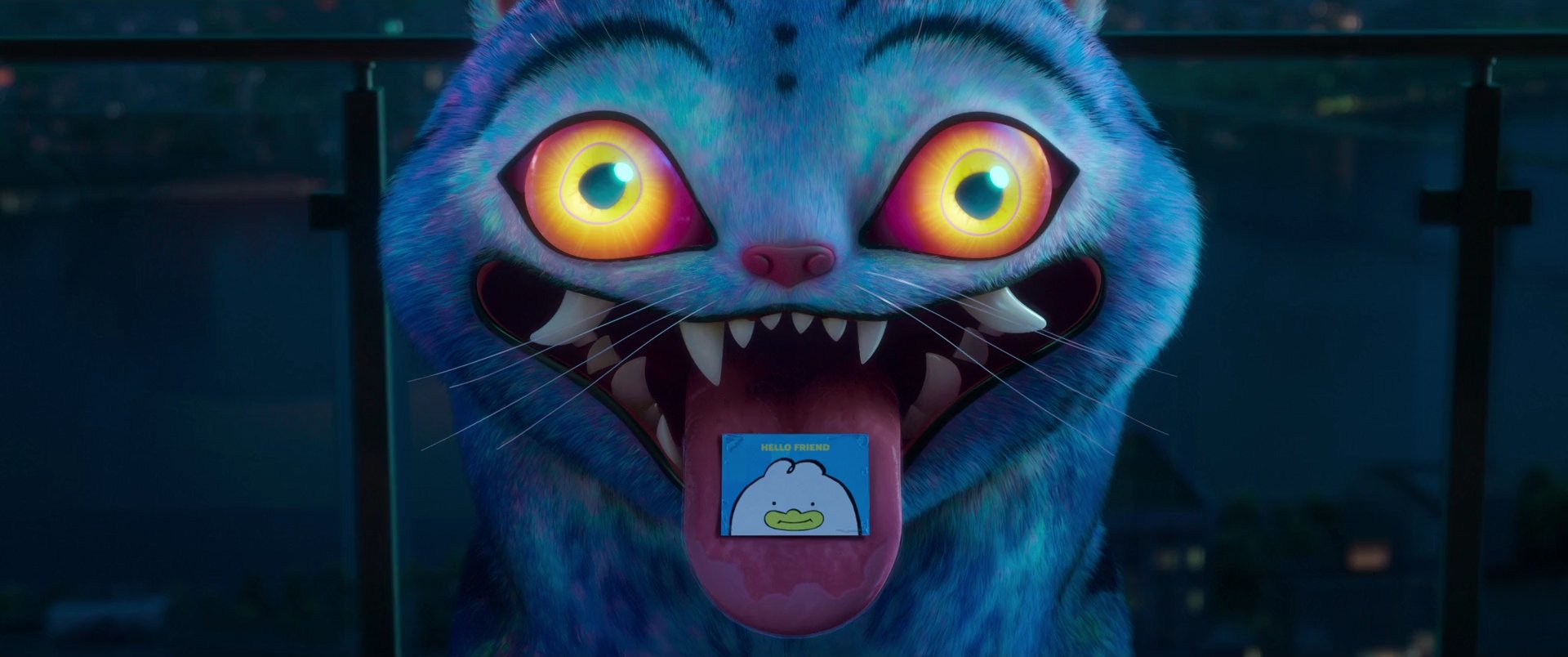
I also want to receive a message from Derpy. (Source: X)
Derpy's playful cat-like personality and fluffy cuteness have won over many fans. Netflix, of course, sees the opportunity, and "Demon Hunters" merchandise is already available for pre-order on the Netflix online store! This is sure to spark a Derpy merch craze.
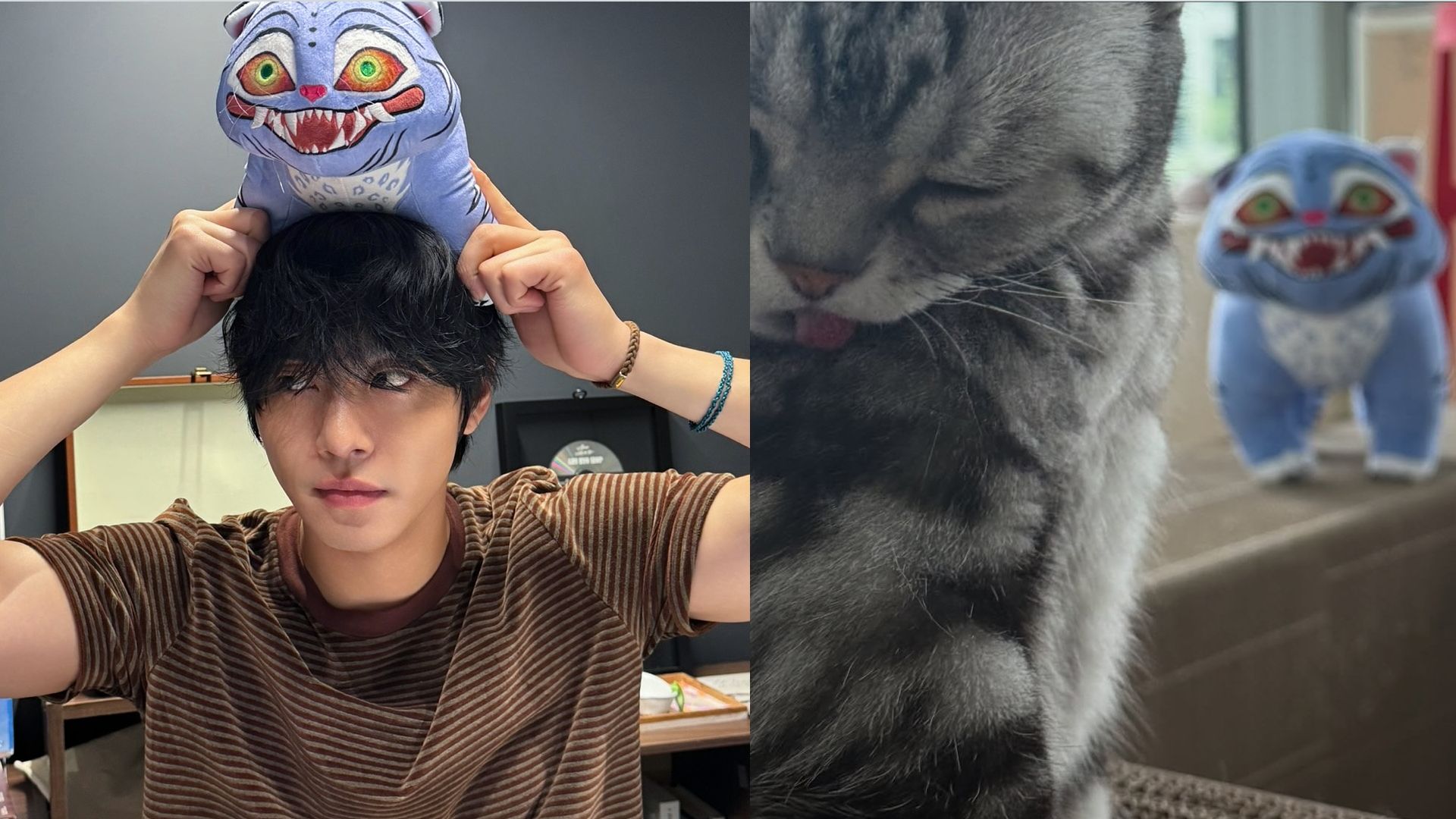
Ahn Hyo-seop has already taken a Derpy plushie home. (Source: imhyoseop)
By the way, those bizarre-looking demons in the soul gate, including Saja Boys themselves, are actually inspired by the Korean traditional goblin "Dokkaebi" (도깨비). Dokkaebi are mysterious creatures that are human-like but not quite, with ever-changing appearances. A handsome one like Jinwoo is quite rare.
There are so many highlights I haven't covered, but I'll leave it at that. If you're a K-pop fan, the movie's detailed portrayal of K-pop culture and numerous Easter eggs will have you taking screenshots like crazy; even if you're just in it for a fun watch, you'll be captivated by the stunning choreography, beautiful animation, and K-drama-style romance.
It's worth noting that the ending leaves some mysteries unresolved: Lumi's backstory isn't fully revealed, and her mother's hidden love story awaits exploration. Considering Sony Pictures' rich experience in IP development (like the "Spider-Man" series), these hints might suggest a sequel? What will happen next? Let's wait and see!
